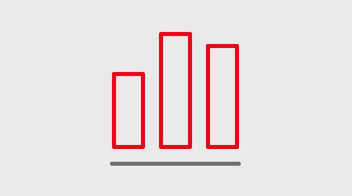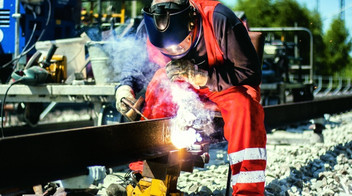Responsibility for the plant and animal world
DB Group’s rail tracks, buildings and areas often provide a unique habitat for protected species. We develop eco-friendly solutions to offset any impact that our work has on the natural world:
- As part of the railway expansion between Nuremberg and Bamberg on the 18 ha site of a decommissioned quarry, for example, a habitat with rich structures and rich in species was developed for numerous plant and animal species through maintenance and development measures.
- We are also improving habitats during bridge renewals. For example, during the construction of the Nidda bridge in Bad Vilbel, new and large leaching areas were created as a result of the piling up of gravel, and further below the Nidda, a resting place for fish was created.
In addition, a research project was initiated in 2023 by the German Center for Rail Transport Research for the assessment of the necessity and success of bird protection measures at overhead wire facilities in order to further protect birds and small animals in the future.
Bird protection measures
We recorded about 3,000 short-circuit events on overhead wires caused by animals in 2023. About 93% thereof involved birds, and about 7% involved small mammals (almost unchanged from the previous year).
To improve the situation, bird protection measures are being carried out on the insulators as part of the full overhead wire inspection. Traction current lines in areas that have a high risk of bird collisions are also being made safe.
Insect Protection Act
Wherever we have to intervene in nature for new rail facilities, we also create new living spaces through ecological compensation areas. On an area of 2,500 m² north of Hailer-Meerholz that has so far been used purely for agriculture, habitat is being created by means of a newly created pond, particularly for aquatic species. In the course of the vegetation phase, different plant species settle, and amphibians and especially insects use the pond as a breeding area or habitat. To implement measures that are friendly to wild bees, work aids have been developed for employees and environmental planners.
IT systems to document protected areas
There may be overlaps between conservation areas. In 2023, there was a system switch to collect data on a new IT tool, leading to improved and more complete data quality and therefore, in some circumstances, to increased values.
We use geographic information systems, which store data about rail lines and surrounding land and all digitally available information on protected areas in Germany. This enables us to quickly identify the points of contact between nature and DB Groupʼs tracks and land. There are different restrictions and requirements in each protected area, which are described in protected area ordinances. These are stored in our system and are taken into account in construction work.


